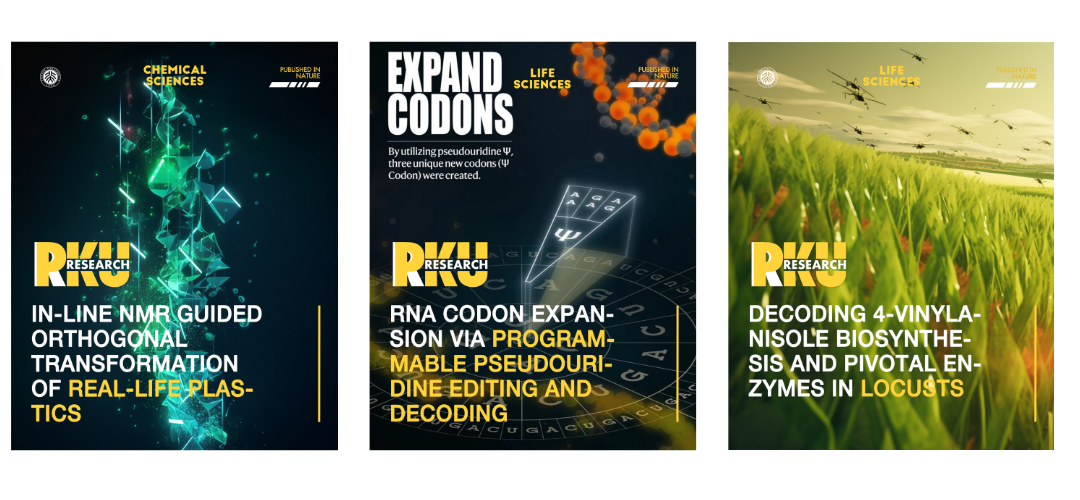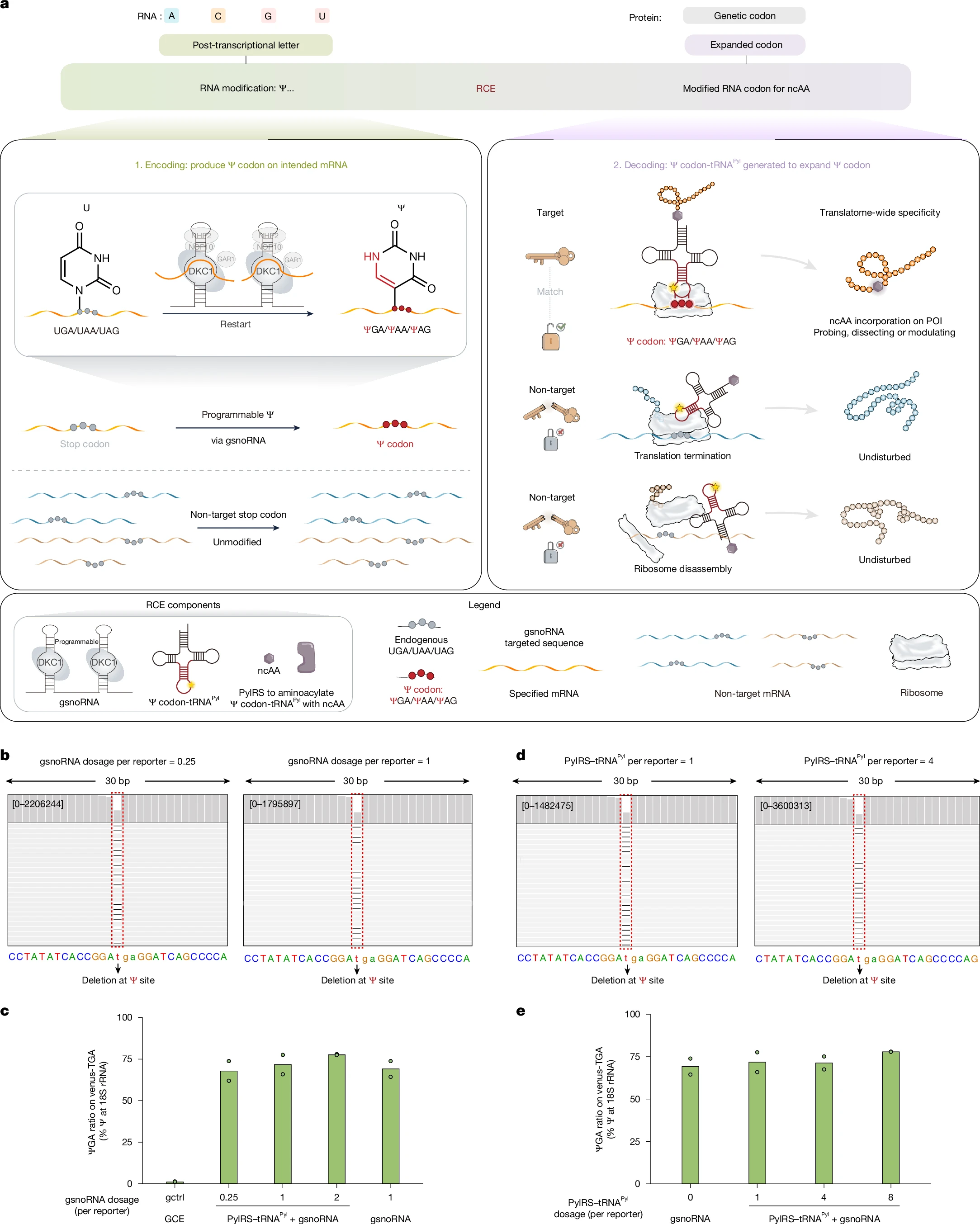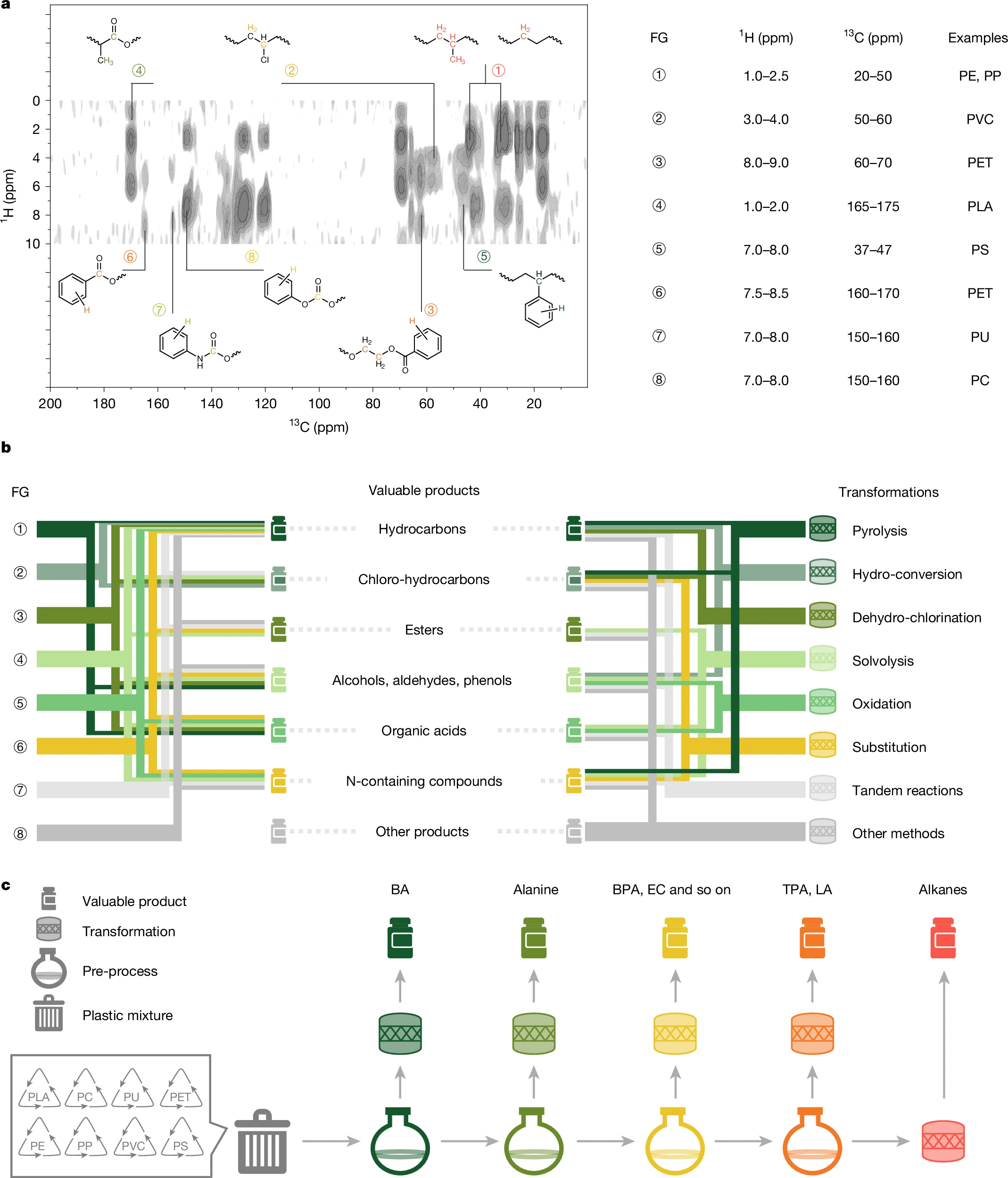
Peking University, June 26, 2025: Nature just published three PKU research at midnight June 25, respectively covering RNA chemical engineering, plastic waste treatment and locust behavior modification. Below is a glimpse into each research.
1. RNA condon expansion drives advance in protein engineering
To overcome the inherent challenge of translation termination interference caused by stop codon reprogramming in mammalian cells, researchers from Peking University led by Professor Chen Peng from College of Chemistry and Molecular Engineering and Yi Chengqi from School of Life Sciences have developed a novel codon expansion strategy that enables precise incorporation of noncanonical amino acids (ncAAs) without perturbing natural genetic codes. This innovative approach utilizes post-transcriptionally modified RNA codons—distinct from all 64 standard genetic codons—within targeted transcripts to encode ncAAs in mammalian systems. This work establishes a versatile platform for expanding the genetic code in mammalian cells, paving the way for advanced protein engineering and functional studies in complex biological systems. These findings were published in Nature under the title "RNA codon expansion via programmable pseudouridine editing and decoding."
Read more: https://www.nature.com/articles/s41586-025-09165-x

Fig. 1: Schematic overview of the RCE strategy and yields of encoded ΨGA codon in the specified mRNA transcript.
2. Better plastic waste management
Addressing the challenge of waste plastics treatments, the scientific community has been pursuing innovative solutions. Recently, researchers from Peking University, led by Professor Ma Ding from College of Chemistry and Molecular Engineering, in collaboration with Professor Xu Shutao from Dalian Institute of Chemical Physics, Chinese Academy of Sciences, uncovered how complex plastic mixtures can be utilized based on the differences in the physical and chemical properties of the components with the aids of NMR technique and catalytic approaches. This work provides a new treatment strategy for recovering real-life plastics and maximizing their potential as raw materials. Their findings, titled “In-line NMR Guided Orthogonal Transformation of Real-life Plastics,” were published in
Nature.
Read more: https://www.nature.com/articles/s41586-025-09088-7

Fig. 2: Proposed strategy for the recovery of mixed plastics.
3. Substitution of locust behavior modification for chemical pesticides
In light of severe environmental and health issues caused by extensive application of chemical pesticides to drive out locust swarms, an alternative relying on manipulating communication chemicals to modify the insect’s behavior has gained traction. Led by Professor Lei Xiaoguang from College of Chemistry and Molecular Engineering, Peking University, and Kang Le from Chinese Academy of Sciences, a team of researchers explored the biosynthesis of pheromones and behavioral responses of locusts with enzyme manipulation. They have identified several chemicals that can block the production of an aggregation pheromone by inhibiting transfer of certain proteins through enzymes, thereby suppressing locust aggregative behavior. Their findings, published in
Nature, were titled “Decoding 4-vinylanisole biosynthesis and pivotal enzymes in locusts.”
Read more: https://www.nature.com/articles/s41586-025-09110-y

Fig. 3: Plant-derived phenylalanine is a substrate of 4VA biosynthesis.
Written by: Chen Peng, Yi Chengqi, Ma Ding, Xu Shutao, Chen Shizhuo
Edited by: Zhang Jiang



